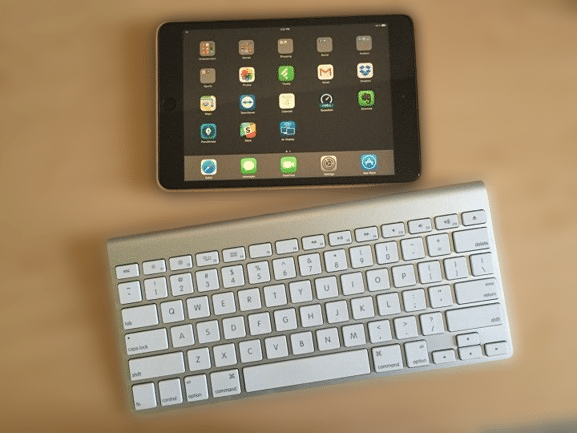The smallest detail can make a great difference in the gaming world. Computer gamers never cease to employ strategies that will lead to better graphics, fps, and hence an improved gaming experience. The temperature of the graphics processing unit is frequently neglected device’s aspect. Is it just hypertension or, indeed, GPU temperature disturbs gaming ecstasy? Let’s investigate this area to tell us the truth.
Understanding GPU Temperature
GPU temperature ascertaining plays a key role in achieving the best gaming graphics card features both in the sense of movie-like performance and the sense of good product durability. When we talk about embedded GPU temperature, that is the temperature which reflects the result of tasks set by the graphics processing unit and is combined with factors such as ambient temperature and cooling solutions. When gaming, the GPU temperature increases. This is justified because more processing is required during the rendering of the graphics.
The common GPU temperatures during the game usually lie between 60°C and 80°C, however, this may vary from one GPU model’s specification to another and be affected by such factors as the effectiveness of the cooling tech, as well as the surrounding environment. It is the duty and the task of every gamer to ensure the temperature of this machine is within this range to prevent any performance degradation or even hardware damage. By monitoring and maintaining the machine temperature within the ideal range, you will ensure a smooth and enjoyable gaming experience.
Factors Affecting GPU Temperature
These factors may include internal variables such as the power of the GPU or the design of its case, and external factors like ambient temperature and airflow within the room. From the outside, factors that determine the GPU’s success include factors like the GPU’s architecture, power consumption, and cooling system design which have a huge impact as well. Having external factors such as the ambient temperature of the situation, case airflow, and the intensity of the GPU being utilized in the workflow can alter its temperature.
Ideal Temperature Range which Gaming GPUs Suffer from
While the optimal operating temperature for gaming GPU models may vary depending on the particular model and brand, fact is most of the GPUs work markedly better in the temperature range between 60 °C and 80 °C that is under load. For instance, extending the operating conditions below this range may not be advisable or may lead to the possibility of damaging the hardware.
Having High GPU Temperature is the Risk
The heating of the GPUs exposes the gaming graphic cards to several risks like infrared rays and performance degradation. The other one is performance degradation, which involves the throttling of the GPU down; then, a switch to a lower clock speed is done to reduce heat generation only to lead to a reduction in frame rates, and this has a direct impact on the overall gaming experience.
With that, other technology issues may happen at high temperatures for a long time, such as damage to hardware due to thermal stress on the graphics processing unit core, modules of the memory, and the circuit of power delivery. The effects of radiation resulting in hardware failure in the long run can be seen in the forms of chip delamination, solder joint rupture, and capacitor degradation. Thus, the task of controlling and managing GPU temperature which will reduce dangers is useful to have in mind and guarantee the good performance and lifespan of the graphics card.
Performance Degradation
Just like the processor in the system, pulsating temperatures of high GPU will result in performance bottlenecks. Thermal throttle is one of the common problems faced by the GPU when it is exposed to critical thermal conditions. Here it reduces its clock speeds, which results in the lesser efficiency of the GPU. It could lead to lower frame rates or involve worsened input lag features resulting in decreased overall gaming performance.
Hardware Damage
In addition to performance degradation, besides the prolonged exposure to much higher GPU temperatures faulty hardware may also be the unfortunate side effect. Excess heat can give us this thermal stress that can be shown in the physical characteristics of these GPU units like the GPU core, memory modules and power delivery circuitry. In the long term, these will lead to hardware failures as in the case of chip delamination, solder joint fractures, and degradation of capacitors.
Monitoring GPU Temperature While Gaming
The temperature of the GPU must be monitored to keep it at an optimal level for maximum performance, and for not being overheated. Thankfully, many software platforms provide real-time information about the variable’s performance and readings of the GPU temperature. It is through these modern tools that users can get the necessary data on temperature levels which they can use to track changes and pinpoint probable issues which could land them in trouble if not handled properly.
One should, therefore, keep on checking the memory graphical processing unit’s ( GPU) temperature, especially when overclocking the GPU and during intensive gaming, to make sure that it is not overheating. Thermaling GPU temperature actively ensures that users take the required measures in time to check whether the cooling solution is adequate as well as to adjust the fan speeds or lower the workload intensity to avoid overheating and ensure system stability.
Software Tools for Monitoring
Several software utilities are available for monitoring GPU temperature, including MSI Afterburner, EVGA Precision X, and GPU-Z. These tools provide real-time temperature readings, as well as additional information such as GPU utilization, clock speeds, and fan speeds. By monitoring GPU temperature regularly, users can identify potential issues and take corrective actions before they escalate.
Recommended Monitoring Frequency
The frequency at which you should monitor your GPU temperature depends on several factors, including the intensity of your gaming sessions and the stability of your cooling solution. As a general rule of thumb, it’s a good idea to check your GPU temperature periodically, especially during prolonged gaming sessions or when experimenting with overclocking settings. Additionally, monitoring your GPU temperature before and after significant hardware or software changes can help ensure system stability and prevent overheating-related issues.
Cooling Solutions
To combat high GPU temperatures, several cooling solutions are available. Air cooling, the most common method, relies on fans to dissipate heat from the GPU heatsink. Liquid cooling, on the other hand, utilizes coolant to transfer heat away from the GPU more efficiently. Additionally, aftermarket cooling solutions, such as custom heatsinks and thermal pads, offer enhanced cooling performance for enthusiasts.
Air Cooling
Air cooling is the most common and cost-effective cooling solution for gaming GPUs. It typically consists of a combination of heatsinks and fans that are designed to dissipate heat away from the GPU and surrounding components. While air cooling is effective for most gaming scenarios, it may struggle to keep temperatures in check during overclocking or in high ambient temperature environments.
Liquid Cooling
Liquid cooling offers superior thermal performance compared to air cooling, making it ideal for enthusiasts and overclockers. The Liquid cooling systems utilize a combination of water blocks, radiators, pumps, and coolants to transfer heat away from the GPU efficiently. By circulating coolant through a closed-loop system, liquid cooling can maintain lower GPU temperatures even under heavy loads.
Aftermarket Cooling Solutions
For users seeking maximum cooling performance, aftermarket cooling solutions offer additional options. These include custom heatsinks, thermal pads, and heat spreaders that can be installed to enhance thermal dissipation and reduce GPU temperatures. While aftermarket cooling solutions may require additional installation effort and investment, they can significantly improve GPU temperature and performance.
Tips for Maintaining Optimal GPU Temperature
Ensuring proper case airflow is crucial for maintaining optimal GPU temperature. By optimizing airflow within the PC case, users can facilitate the efficient removal of hot air generated by the GPU. Regular cleaning of the GPU and surrounding components is also recommended to prevent dust buildup, which can impede airflow and lead to higher temperatures. When overclocking the GPU, it’s essential to consider the increased thermal load and adjust cooling solutions accordingly.
Proper Case Airflow
Proper case airflow is essential for maintaining optimal GPU temperature. By strategically placing intake and exhaust fans within the PC case, users can create a positive airflow path that facilitates the efficient removal of hot air generated by the GPU. Additionally, ensuring that cables are neatly routed and components are not obstructed can help improve airflow and reduce GPU temperatures.
Regular Cleaning
Regular cleaning of the GPU and surrounding components is crucial for preventing dust buildup, which can impede airflow and lead to higher temperatures. Using compressed air or a soft brush, gently remove dust and debris from the GPU heatsink, fans, and surrounding areas. It’s also a good idea to clean the PC case and intake/exhaust fans regularly to ensure optimal airflow and cooling performance.
Overclocking Considerations
When overclocking the GPU, it’s essential to consider the increased thermal load and adjust cooling solutions accordingly. Overclocking can significantly increase the power consumption and heat generation of the GPU, potentially leading to higher temperatures and reduced stability. To mitigate this, users should ensure that their cooling solution is capable of dissipating the additional heat generated by overclocking and monitor GPU temperature closely during stress testing.
Common Myths about GPU Temperature While Gaming
Despite its importance, GPU temperature is often shrouded in myths and misconceptions. From believing that lower temperatures always equate to better performance to assuming that GPU temperature doesn’t affect gameplay, there are many myths to debunk. In reality, maintaining the GPU within its optimal temperature range is crucial for achieving peak performance and longevity.
Myth vs. Reality
- Myth: Lower GPU temperatures always result in better performance.
- Reality: While lower temperatures can potentially improve overclocking headroom and longevity, excessively low temperatures may not necessarily translate to better performance.
- Myth: GPU temperature has no impact on gameplay.
- Reality: GPU temperature directly affects performance, with high temperatures leading to performance degradation and potential hardware damage.
- Myth: Liquid cooling is always better than air cooling.
- Reality: While liquid cooling offers superior thermal performance, air cooling can be sufficient for most gaming scenarios and is often more cost-effective.
Conclusion
In the realm of gaming, where every frame matters, GPU temperature plays a significant role in determining performance and longevity. By understanding the importance of maintaining optimal GPU temperature, gamers can take proactive measures to ensure smooth and uninterrupted gameplay. Whether through proper cooling solutions or regular monitoring, keeping GPU temperature in check is essential for gaming excellence.
FAQs
- Does GPU temperature affect gaming performance? Yes, high GPU temperatures can lead to performance degradation and decreased frame rates during gameplay.
- What is the ideal GPU temperature for gaming? The ideal GPU temperature for gaming typically ranges between 60°C to 80°C, depending on the GPU model and workload intensity.
- Can aftermarket cooling solutions improve GPU temperature? Yes, aftermarket cooling solutions, such as custom heatsinks and liquid cooling systems, can help improve GPU temperature and performance.
- How often should I monitor my GPU temperature? Monitoring GPU temperature regularly, especially during intense gaming sessions or when overclocking the GPU, is recommended to prevent overheating-related issues.
- Are there any long-term effects of high GPU temperature? Prolonged exposure to high GPU temperatures can potentially damage sensitive components of the graphics card, leading to decreased lifespan and performance issues.
Read Also: Ketamine Infusion Therapy for Depression | What to know


